A Message from Theo Huscheck
Dear all
Thank you all for your nice thoughts and your support in these difficult days for me and my family.
Best regards
Theo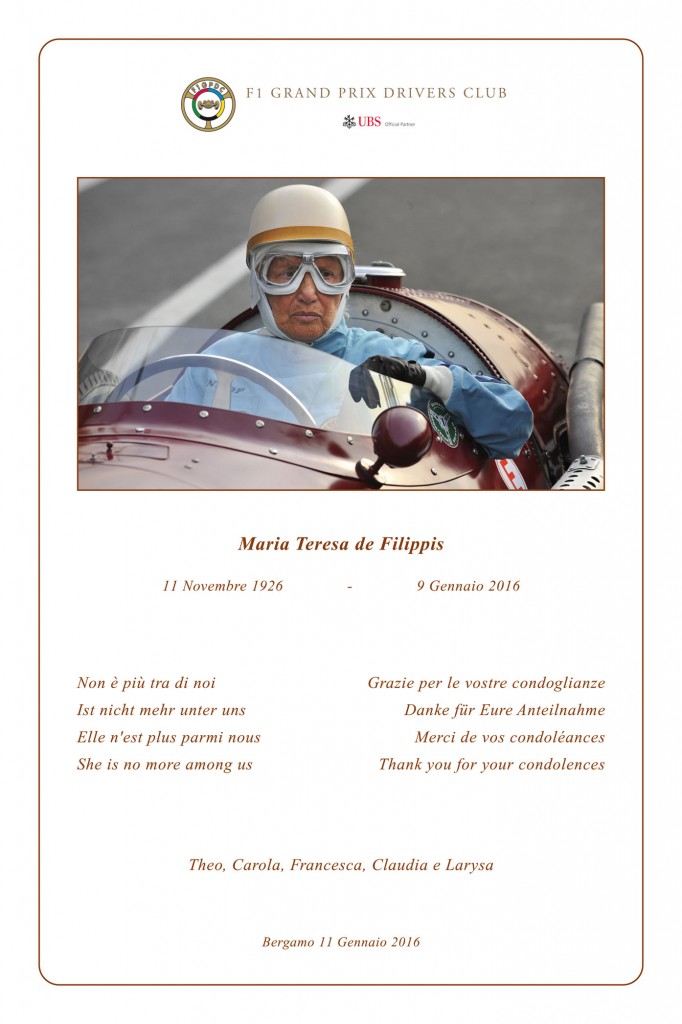
Just two months ago we were congratulating our Honorary Club President, Maria-Teresa de Filippis on reaching her 89th birthday but today we mourn her passing after a long and debilitating illness which she battled tenaciously yet still managed to attend Club affairs until a year ago.
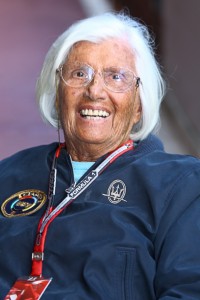
For those of us who knew her well, she was a strong charactered, forthright and yet amusing lady who could make her voice heard in any company. In a sense this was no surprise for, back in 1958 when she entered her first World Championship Grand Prix, she only just failed to qualify for the hardest grand prix of all, at Monaco. The car she was driving was a Maserati 250F. She was a loyal supporter of Maserati; and they of her. She was President of the Maserati Club.
If Lella Lombardi has been the only woman to register a point – half a point, in fact – in the Formula 1 World Championship, it is Maria-Teresa de Filippis who always tends to come to mind when people start talking about women in grand prix racing.
Maria-Teresa came from an aristocratic family that owned the Palazzo Bianco near Caserta and her father was Count Serino Franz de Filippis, Narcisa, Anselmi, Balaguer, Roca de Togores y Ruco hu Perpignan.
Count Serino had five children, three sons and two daughters. Maria-Teresa was the youngest child and was probably her father’s favourite.
The family had two houses in Naples and Maria-Teresa was used to playing with old cars in the converted stables. She was a great enthusiast for horses and for cars and one day she went to a fortune teller in Naples who looked at her palm and told her that within a year she would take part in a motor race and would win it.
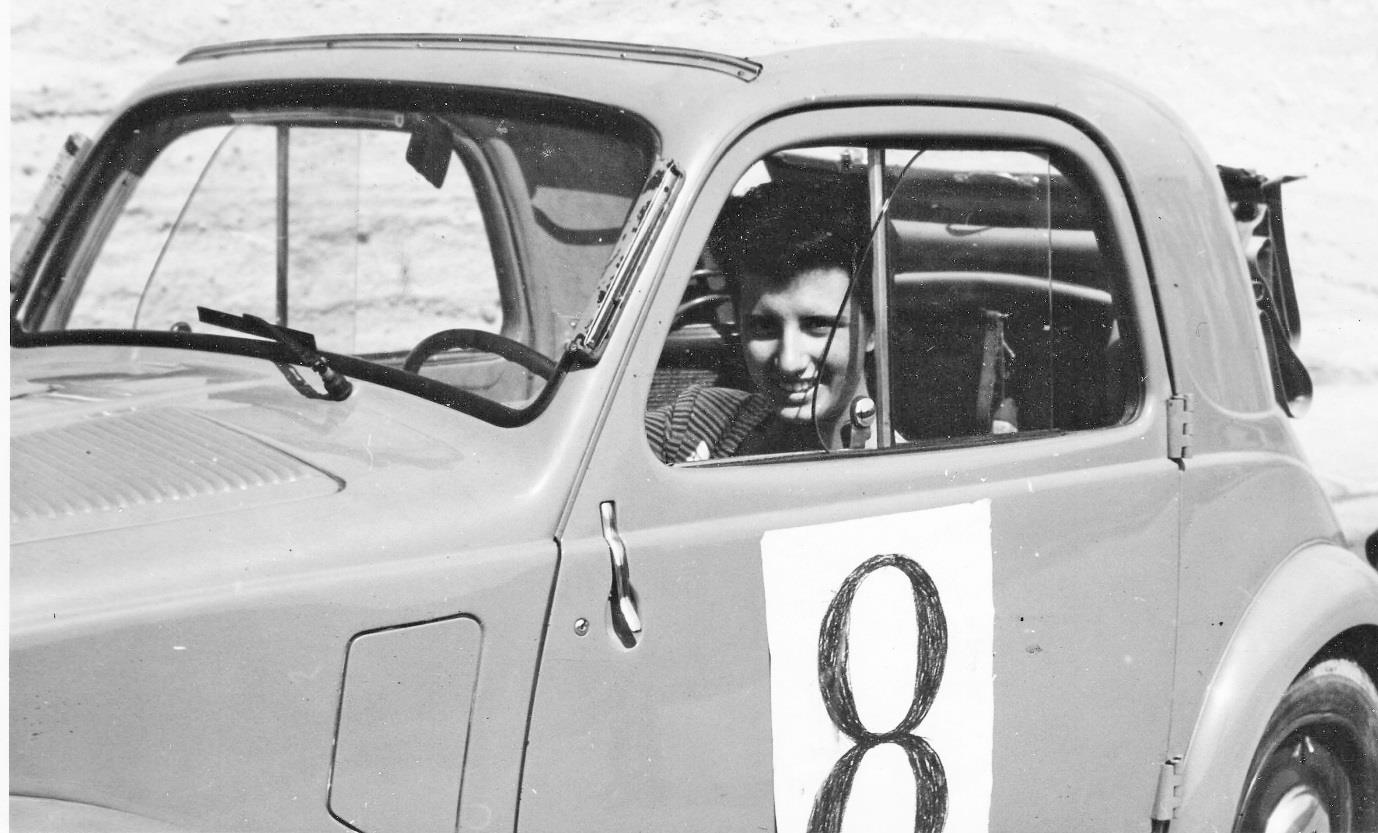
So it came to be that in June 1948 at the Salerno-Cava dei Tirreni hill climb she entered her modest Fiat 500 and won her class. After a few more hill climbs she decided to forget about the horses and concentrate on cars and racing.
Maria Teresa’s brother Antonio, was a great motor sport enthusiast and bought one of the early A6GCS sports cars with cycle wings and a single headlight in the radiator grille. Though in some records it is recorded as being owned by Maria Teresa De Fillipis she explained that she never drove the car and only her brother drove it.
Once she had decided to concentrate on racing she needed a proper racing car and early in 1949 she drove a Camen-Fiat. This was one of a multitude of small racing cars built in Italy. It was built by Alfredo and Guglielmo Esposito who formed a company called “ Costruzzioni Automobili e Motore Esposito Napoli “ – hence CAMEN. However the car that was to made her name in those early days was a Urania-BMW built by Berardo Taraschi, himself a successful racing driver.
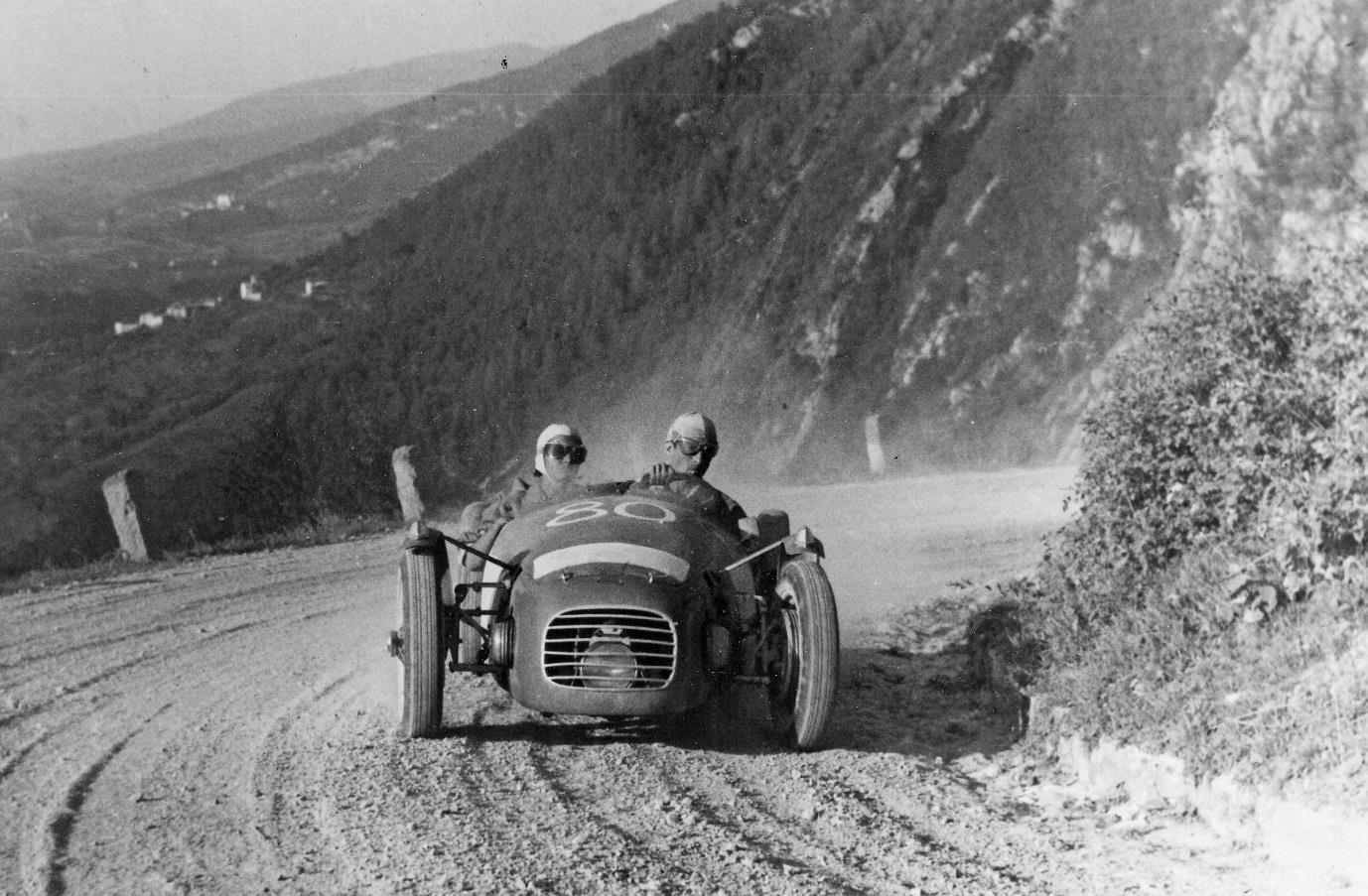
She also had setbacks, such as in the 1950 Giro di Sicilia. She had rolled up to her starting position but stopped a few inches behind the line. Her mechanic rushed and pushed her forward and the race started. She did well and was presented with a bunch of flowers and then the organisers disqualified her because they claimed she had been push-started.
Maria-Teresa was furious at the organisers for letting her complete the entire race after an infringement that had taken place at the start. She was beginning to learn that even though you were a dark and attractive girl in white overalls and linen helmet, there were no concessions save, perhaps, a twinge of embarrassment at her pace against the men.
However, at that race she had an ally in the great Tazio Nuvolari. Nuvolari had retired his Cisitalia-Abarth from the race and he too went to the organisers and said “ You made a girl drive over one thousand kilometres on wet roads only to then disqualify her; this is crazy.”
On holiday in Naples she met the young and up-and-coming racing driver Luigi Musso who helped her develop her racing through the years.
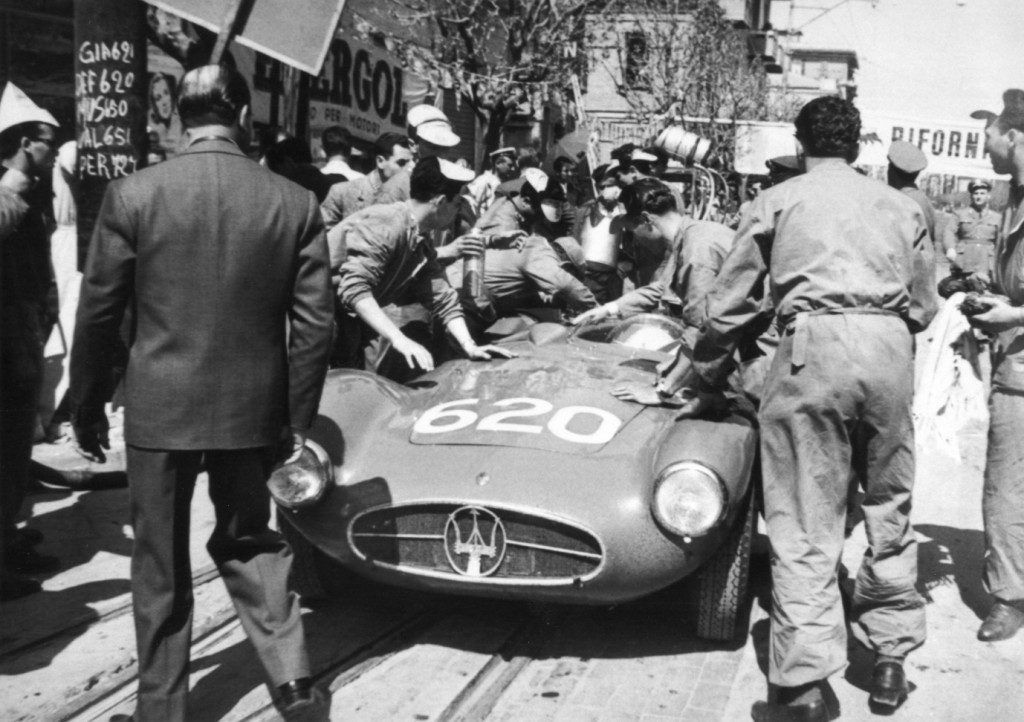
For the 1954 racing season Maria-Teresa travelled to Bologna to meet the Maserati brothers, who now ran OSCA, and ordered one of their successful MT4 sports cars. It was an 1100cc model, finished in white with a red stripe along the sides. Her first race with the car was at the Avellino circuit but it was a close thing as she took delivery of her OSCA in the paddock just before first practice for the event. Luigi Musso was to win the race in his new Maserati A6GCS and Maria-Teresa, despite spinning, eventually finished fifth overall and second in the 1100cc class. The fact that she always tended to feel patronised because she was a girl made her more and more determined to beat the men in equal circumstances.
One of her best races in 1954 season was at Enna in Sicily when she was up against all the best Italian drivers. On that occasion Franco Bordoni was to win with a 2 litre Gordini with seasoned Maserati driver Luigi Bellucci in a A6GCS 2 litre in second place and Maria-Teresa in sixth with the 1100cc OSCA. By now the Italians were calling her “ una diavola” (she-devil) and she had plenty of admirers .
She then moved up a class and ordered a 2 litre A6GCS, a more modern version of the car her brother had raced. When she ordered her car she was clearly welcomed at Maserati Not only was she friendly with Omar Orsi, the son of the owner of Maserati but with the legendary Maserati test driver Guerino Bertocchi, whom she always thought of as a father.
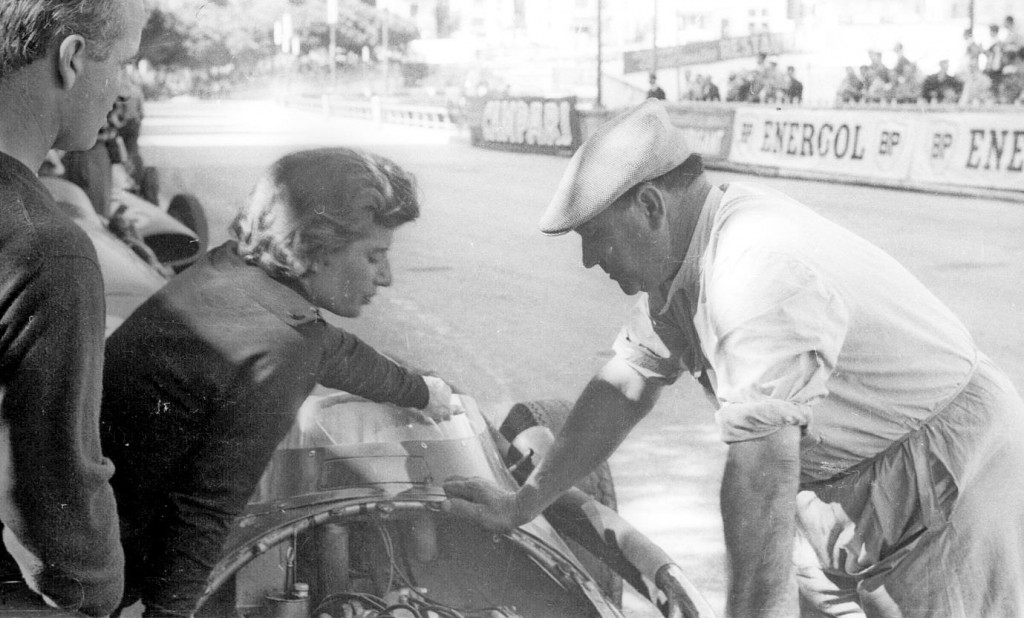
Then there was the Italian press to contend with, the “Italian Brotherhood” as Maria-Teresa called them. She had been invited to race for a German company at the Nurburgring in 1957, (presumably Porsche) and Luigi Musso was one of the people who persuaded her not to take up the offer. Later, she faced the same problem when Jean Behra tried to get her a test drive with BRM and when an offer came from Cooper to test a grand prix car. The Italian press, as Enzo Ferrari knew to his cost, can be volatile when Italian nationalism comes into the picture and they were to argue that Italian drivers should try to help Maserati which had severe financial problems towards the end of 1957
The whole concept of Maria-Teresa moving into Grand Prix racing actually came from Guerrino Bertocchi and company owner Omar Orsi and she bought a Maserati 250F .
Though many people at the time commented on the fact that a woman was hardly capable of handling a heavy grand prix car they were to eventually agree that she was as capable as most of the private entrants who were racing Maseratis at the time and a good deal faster than some.
What made her performance so remarkable is the often overlooked fact that at the time she only weighed 49 kilos (around 8 stones). Also, because she was so small, Medardo Fantuzzi built special padding around the cockpit of her Maserati and a cushion so that she could reach the pedals!
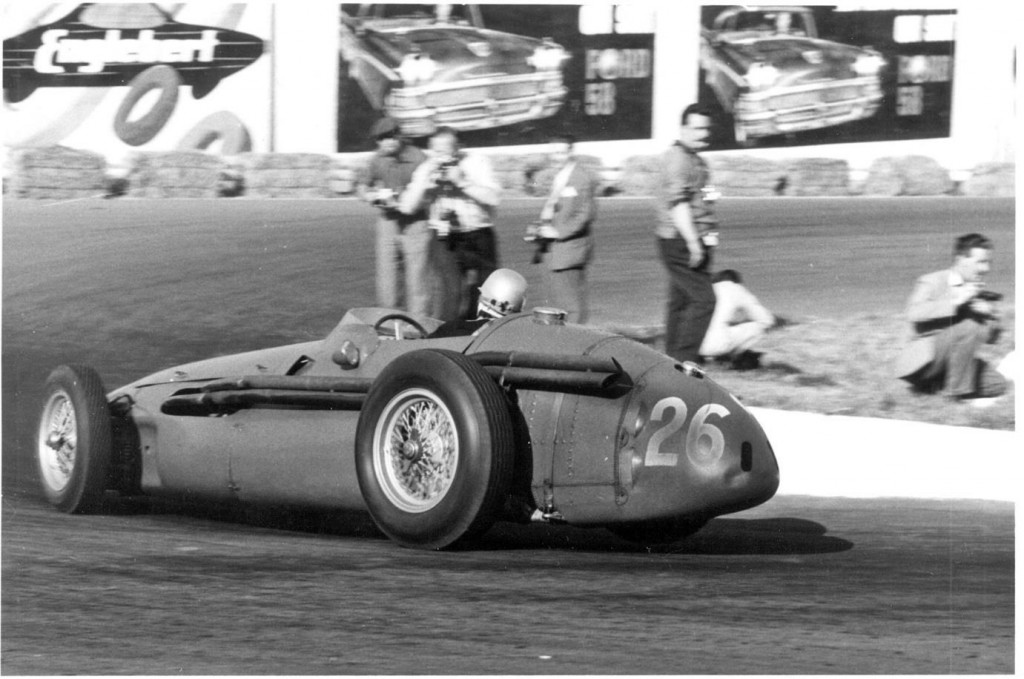
The Maserati 250F was taken to Syracuse for the 1958 grand prix. Luigi Musso told her in practice to go out behind him and he would show her the lines round the corners. Then it was time for official practice and to everyone’s surprise she was far from the slowest competitor and was to finish fifth in the race, albeit with a relatively modest field. “To me it was something absolutely stratospheric. It was as though I had won the race” she recounted in her biography.
Her wrath was stirred up when “Toto Roche” , the organiser of the French Grand Prix of 1958, refused to accept her entry with the belittling remark: “Such a beautiful woman must not cover her face with helmet and goggles. The only hair cover that she should be allowed is at the hairdressers for a perm.” The spirit of Chauvin and his chauvinism clearly still existed in France in those days.
At the Italian Grand Prix in 1958 she was holding fifth place – and was the highest placed Italian driver – when a con-rod broke. I was near the spot. There was a huge puff of white smoke and the Maserati rolled to a stop. She climbed out of the car and sat down on the grass in front of me clearly exhausted and in pain not realising she was suffering from a stomach ulcer.
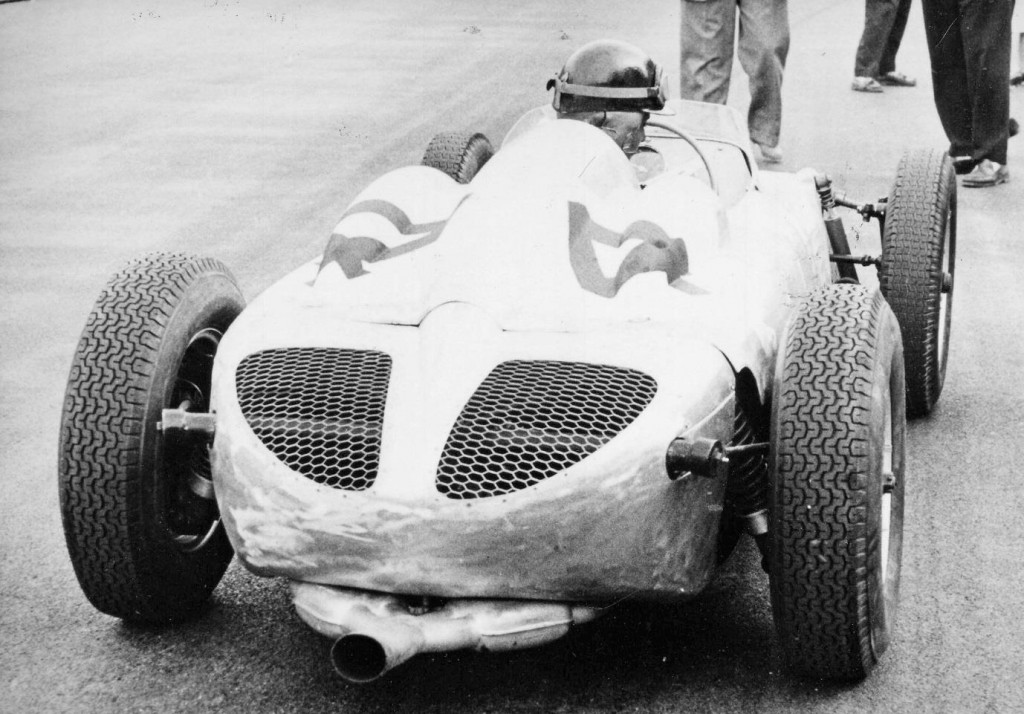
What is not often realised is that on one occasion Maria-Teresa de Filippis raced a Formula 2 Lotus. The occasion was the 1959 Syracuse Grand Prix when, probably through the help of her fellow Maserati privateer, Bruce Halford, she was offered the Lotus 12 that Halford had raced for John Fisher’s team. The car was a dog and it broke down in the race giving the Italian press a field day; one journalist complaining that the car should not have been sent to Syracuse but instead to the Biscaretti Museum in Turin! He went on to suggest the car must have been built in Carthage and that it contained the fingerprints of Hannibal, Cleopatra,Ivanhoe, Cromwell and Shakespeare !
Clearly her Maserati was finished as a competitive racing car and Jean Behra offered her his Behra-Porsche Formula 2 car for the Monaco Grand Prix in 1959 but it was not competitive. There was confusion after practice as it appeared as though she had qualified for the race but Cliff Allison in a Formula 2 Ferrari was given the place on the grid leaving Maria-Teresa distraught. Later that season when Behra was killed at Avus Maria-Teresa retired from motor racing.
That year, she went on holiday to St Anton in Austria and met Theodor Huschek and six months later, in 1960, they married. In 1978 Maria-Teresa joined the Club International de Anciens Pilotes de Grand Prix F1, and was to become General Secretary. Later her husband Theo took over as General Secretary, a post he holds to this day.
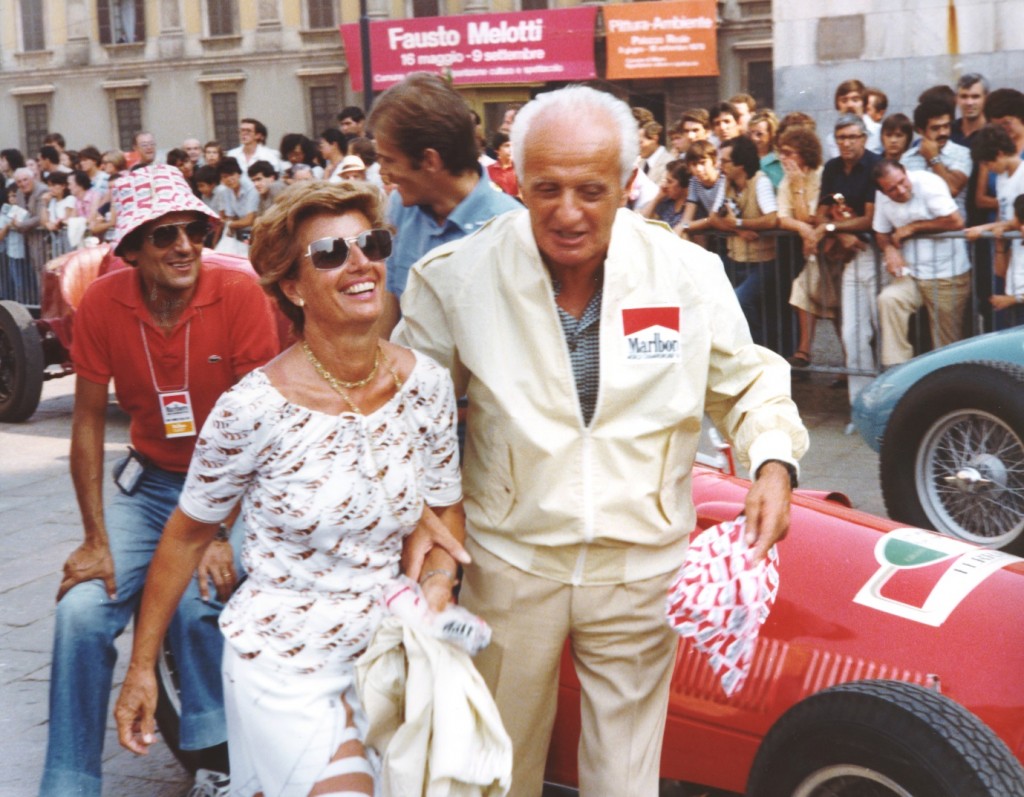
One of the great chroniclers of Grand Prix racing was the late Denis Jenkinson, sports editor of the English magazine “Motor Sport”. After watching Maria-Teresa take part in her first race in a Maserati Grand Prix car in 1958 he wrote “An interesting sight at the Gran Premio Siracusa was to see a 26-year-old Italian girl driving a grand prix Maserati and not teetering round at the back of the field in an effeminate way, but having a real go “up with the boys”.
“This was Maria-Teresa de Filippis from Naples and, although it was her first outing in Formula One, she showed she was not frightened of the car, getting it into full-lock power slides through the corners and winding it up to well over 7000rpm in the gears”.
For those of us lucky enough to watch her race nothing more need be said.
Our thoughts today are with Theo, their daughter Carola, their grandchildren and family on their sad loss.
Graham Gauld
